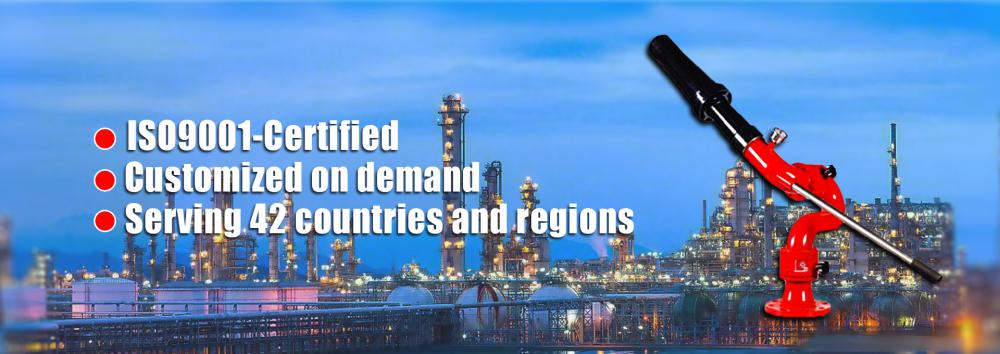How to Check if the Performance of Foam Fire Cannons
- Foam Discharge Consistency: Briefly activate the cannon (if conditions allow) to observe the foam stream. The foam should be uniform in texture, neither too thin (indicating insufficient foam concentrate) nor too thick (suggesting excessive concentrate). A stable, continuous stream without sputtering is a sign of normal operation.
- Mechanical Movement (for manual and mobile cannons): Manually rotate or adjust the elevation of the cannon. It should move smoothly without stiffness, jamming, or unusual noises. For mobile cannons, push or pull them to check if the wheels or tracks roll freely, ensuring easy maneuverability.
Leakage Inspection: After any brief activation or visual check, examine all connections (foam inlet, water inlet, and component joints) for leaks. Even minor drips can indicate worn seals or loose fittings, which affect performance over time.

- Range and Coverage: Conduct a controlled discharge test in a designated safe area. Measure the maximum distance the foam stream reaches horizontally and vertically. Compare these values with the manufacturer’s specifications—significant deviations (e.g., a 10% or more reduction in range) indicate issues like clogged nozzles, low pressure, or pump inefficiency.
- Foam Concentration Verification: Use a foam concentration meter to sample the discharged foam. The concentration should match the recommended ratio (typically 1%–6% depending on the foam type and fire risk). Incorrect concentrations point to problems with the proportioning system, such as a faulty valve or mis-calibration.
- Pressure Gauge Readings: Monitor pressure gauges during discharge. Both foam supply and water supply pressures (if applicable) should stay within the manufacturer’s specified range. Fluctuating or abnormally low/high pressures signal issues in the supply lines, pumps, or pressure regulators.
- Electrical System Response (for electric cannons): Test all motorized functions—rotation, elevation, and remote activation. The cannon should respond instantly to control inputs (e.g., rotating 90 degrees in the specified time). Delays or erratic movements may indicate motor wear, wiring problems, or control panel malfunctions.
- Post-Discharge Inspection: Check for signs of overheating in motors (electric cannons) or excessive wear on moving parts. Inspect the nozzle for damage that might have occurred during operation (e.g., from debris impact). Ensure the foam supply and water supply systems maintained stable pressure throughout the discharge.
- System Integration Test: For cannons integrated with fire detection systems, simulate a fire alarm (e.g., trigger a test signal from a heat sensor). The cannon should activate automatically within the expected response time (usually under 30 seconds). Failure to activate or delayed activation indicates communication gaps between the detection and control systems.
- Clogged Nozzles: Use a soft brush or specialized cleaning tool to clear debris. For stubborn blockages, soak the nozzle in a mild cleaning solution (as recommended by the manufacturer) and rinse thoroughly.
- Pressure Issues: Inspect supply lines for blockages or leaks, and check pumps or regulators for proper functioning. Adjust or replace faulty components as needed.
- Electrical Malfunctions: For unresponsive motors or controls, check fuses, wiring connections, and batteries (in remote controls). If issues persist, involve a qualified technician to diagnose and repair circuit boards or motor components.
By combining daily observations, regular technical tests, and post-use evaluations, operators can ensure the foam fire cannon performs reliably when needed most—minimizing risks in gas tank farm emergencies.

- Does the fire water monitor system have to set up a separate fire pipe network?
- Foam Fire Monitors ,Superior Hazard Protection
- What are the Characteristics of the Top 10 Fire Water Monitor Manufacturers in China
- Essential Components and Accessories for Engineering Manual Fire Monitors
- Manual Fire Cannons your Trusted Firefighting Ally
- How to Test a foam fire monitor



